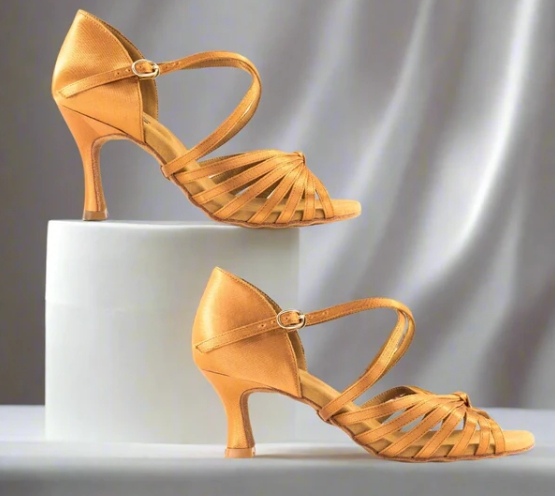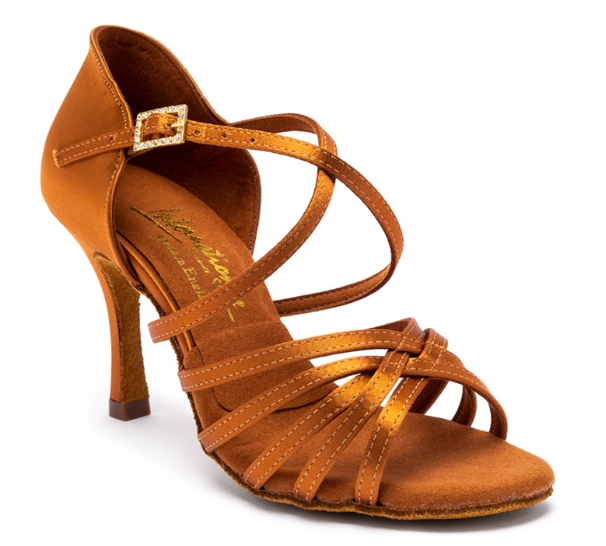Content Menu
● The History and Cultural Significance of High Heels
● How Women Walk in High Heels: The Biomechanics
>> Postural Changes
>> Gait Alterations
>> Muscle and Tendon Adaptations
● The Psychological and Social Aspects of Wearing High Heels
>> Confidence and Empowerment
>> Attractiveness and Femininity
>> Symbol of Power
● Health Implications of Walking in High Heels
>> Foot and Ankle Problems
>> Musculoskeletal Disorders
>> Balance and Injury Risk
>> Long-Term Effects
● Do Women Really Walk in High Heels?
>> Adaptation and Skill
>> Practical Considerations
>> Cultural and Social Pressures
● How to Walk in High Heels Safely
● Conclusion
● FAQ
>> 1. Why do women wear high heels despite the discomfort?
>> 2. How do high heels affect a woman's posture?
>> 3. Are there health risks associated with wearing high heels regularly?
>> 4. Can women learn to walk better in high heels?
>> 5. What are some tips for reducing pain when wearing high heels?
● Citations:
High heels have long been a symbol of fashion, femininity, and elegance, yet they also evoke controversy due to their impact on health and mobility. This article explores the reality behind women walking in high heels—examining the biomechanics, cultural significance, health implications, and psychological effects of wearing these iconic shoes. We will also discuss whether women truly walk in high heels or merely endure them, and how this practice influences their posture, gait, and overall well-being.

The History and Cultural Significance of High Heels
High heels originated from practical uses before evolving into fashion statements. The earliest heels can be traced back to 10th-century Persian cavalry, who wore heeled boots to secure their feet in stirrups while riding horses, ensuring stability and safety during combat[3]. Over time, heels became associated with wealth and status, as only the affluent could afford such footwear that was impractical for manual labor.
By the 17th century, high heels entered European fashion, initially worn by men to signify upper-class status, including royalty such as King Louis XIV[3]. Women adopted high heels later, and by the 18th century, heel styles diverged by gender: men wore thick heels for practicality, while women wore thinner, higher heels symbolizing femininity and elegance. This gendered differentiation established high heels as a marker of female fashion and societal expectations.
How Women Walk in High Heels: The Biomechanics
Walking in high heels is markedly different from walking in flat shoes due to changes in posture, balance, and muscle engagement. When a woman wears high heels, her body's center of gravity shifts forward, requiring compensatory adjustments to maintain balance[1].
Postural Changes
High heels force the wearer to arch the back, thrust the pelvis and chest forward, and stick out the buttocks, creating the characteristic "supermodel strut"[1]. This posture exaggerates the natural curvature of the spine, often increasing lumbar lordosis (the inward curve of the lower back), which can absorb vertical shock but may also lead to hyperlordosis and back pain with prolonged use[2].
Gait Alterations
The gait cycle changes significantly when walking in heels. Strides become shorter and more controlled, with toes pointed downward and hips swaying more to maintain balance[1][6]. This gait is less energy-efficient, requiring more muscle activity, particularly in the calves and thighs, which can lead to fatigue and increased risk of injury[2].
Muscle and Tendon Adaptations
Studies show that regular heel wearers develop stiffer tendons and shorter calf muscles[8]. While this adaptation can make walking in heels more efficient over time, it may cause discomfort or difficulty when switching back to flat shoes. The Achilles tendon, in particular, can contract, limiting ankle flexibility and increasing injury risk[7].
The Psychological and Social Aspects of Wearing High Heels
Beyond biomechanics, high heels play a significant role in social signaling and self-perception.
Confidence and Empowerment
Wearing high heels can boost a woman's confidence by increasing height and altering body language to appear more poised and assertive[6]. The elevated posture and strut associated with heels convey strength and sophistication, which can positively influence self-esteem and social interactions.
Attractiveness and Femininity
High heels accentuate physical features associated with youth and fertility, such as lifting the buttocks and elongating the legs[5]. This mimics biological signals seen in mating postures among female mammals, potentially explaining why high heels are perceived as enhancing attractiveness. Studies have shown that observers find the gait of women in heels more appealing, associating it with femininity and grace[6].
Symbol of Power
Despite their association with femininity, high heels can also symbolize power. Prominent women in leadership and entertainment often wear heels as part of their public image, blending fashion with authority[6].

Health Implications of Walking in High Heels
While high heels offer aesthetic and psychological benefits, they also pose significant health risks.
Foot and Ankle Problems
High heels concentrate body weight on the balls of the feet, increasing pressure and causing pain, blisters, corns, calluses, and nail damage[4][7]. Pointy-toed heels exacerbate these issues by cramping toes into unnatural positions, leading to deformities such as hammer toes and bunions[4].
Musculoskeletal Disorders
The altered posture and gait can strain the knees, hips, and lower back. Increased knee joint extensor moments during heel walking raise bone-on-bone forces, contributing to knee osteoarthritis[2]. The pelvis tilts anteriorly, increasing lumbar lordosis and risking chronic low back pain[2][7].
Balance and Injury Risk
Walking in heels reduces balance and increases the likelihood of ankle sprains and falls due to the unstable elevated heel and restricted ankle motion[2]. These risks are compounded by fatigue from inefficient gait mechanics.
Long-Term Effects
Prolonged and frequent heel use can cause permanent changes in muscle length and joint alignment, making it difficult to walk comfortably in flat shoes and increasing susceptibility to chronic pain and mobility issues[7].
Do Women Really Walk in High Heels?
Given the challenges and health risks, do women truly walk in high heels, or do they merely endure them?
Adaptation and Skill
Many women develop the skill to walk gracefully in heels, adapting their posture and gait to maintain balance and minimize discomfort[1][8]. Regular wearers become more efficient walkers in heels over time, with physiological adaptations that support this footwear style[8].
Practical Considerations
However, the majority of women do not wear high heels continuously. High heels are often reserved for special occasions, work environments, or fashion statements rather than everyday footwear[4]. Women tend to remove heels as soon as possible to relieve foot pain and prevent long-term damage.
Cultural and Social Pressures
Despite the discomfort, social expectations and fashion norms encourage women to wear heels to appear attractive, professional, or empowered[6]. This pressure leads many to prioritize appearance over comfort, sometimes at the expense of health.
How to Walk in High Heels Safely
For women who choose to wear heels, there are strategies to reduce pain and injury risk:
- Limit heel height to moderate levels (around 2-3 inches) to balance style and comfort[8].
- Use cushioned insoles or shoe pads to reduce pressure on the feet[6].
- Alternate heel wear with flats to prevent muscle shortening and joint stiffness[7].
- Practice walking with short, controlled steps and maintain good posture[1].
- Stretch calf muscles regularly to maintain flexibility[7].
Conclusion
Women do walk in high heels, but the experience is a complex interplay of biomechanics, cultural expectations, and personal choice. High heels alter posture and gait, creating a distinctive and often admired walk, yet they also impose significant strain on the body. While many women adapt to wearing heels and even gain confidence and social advantages, the health risks cannot be ignored. Ultimately, wearing high heels is a trade-off between aesthetics and comfort, empowerment and physical well-being. Awareness and moderation are key to enjoying the benefits of high heels while minimizing their drawbacks.

FAQ
1. Why do women wear high heels despite the discomfort?
Women wear high heels to enhance their appearance, boost confidence, and convey femininity and power. Social and cultural pressures also play a significant role in encouraging heel wear despite the physical discomfort[5][6].
2. How do high heels affect a woman's posture?
High heels shift the body's center of gravity forward, causing the wearer to arch the back, tilt the pelvis anteriorly, and stick out the buttocks. This posture change can lead to increased lumbar lordosis and potential back pain over time[1][2].
3. Are there health risks associated with wearing high heels regularly?
Yes. Regular high heel use can cause foot pain, deformities like bunions and hammer toes, knee osteoarthritis, lower back pain, muscle shortening, and increased risk of falls and injuries[2][4][7].
4. Can women learn to walk better in high heels?
Yes. With practice, women can develop more efficient walking patterns in heels, including shorter strides and improved balance. Physiological adaptations such as stiffer tendons and shorter calf muscles can also occur with regular wear[1][8].
5. What are some tips for reducing pain when wearing high heels?
Limit heel height, use cushioned insoles, alternate with flat shoes, maintain good posture, take breaks from wearing heels, and stretch calf muscles regularly to reduce pain and injury risk[6][7][8].
Citations:
[1] https://illumin.usc.edu/walking-in-high-heels-the-physics-behind-the-physique/
[2] https://www.physio-pedia.com/High_heels_and_Women's_Health
[3] https://en.wikipedia.org/wiki/High-heeled_shoe
[4] https://pmc.ncbi.nlm.nih.gov/articles/PMC10651440/
[5] https://www.enricocuini.com/blog/5-reasons-high-heels-make-women-look-more-attractive
[6] https://footpetals.com/blogs/foot-petals-blog/why-do-women-wear-high-heels
[7] https://chiropractorinoviedo.com/blog/the-negative-effects-of-high-heels/
[8] https://www.deseret.com/lifestyle/2024/03/04/high-heels-could-help-you-walk-better/
[9] https://www.reddit.com/r/TheWayWeWere/comments/1gvoojj/how_did_women_manage_to_walk_in_heels_all_the/
[10] https://www.youtube.com/watch?v=5UotByFsU0s
[11] https://www.whowhatwear.com/uk/how-to-walk-in-heels
[12] https://shoefairyofficial.com/en-hk/blogs/news/the-history-of-high-heels-10-facts-that-surprise-you
[13] https://www.endeavorhealth.org/articles/high-heels-foot-health
[14] https://www.frontiersin.org/journals/psychology/articles/10.3389/fpsyg.2017.01875/full
[15] https://airpufs.com/blogs/news/how-to-walk-in-high-heels-for-beginners
[16] https://pubmed.ncbi.nlm.nih.gov/29475153/
[17] https://fashion-era.com/fashion-history/history-of-high-heels
[18] https://osteopathic.org/what-is-osteopathic-medicine/the-real-harm-in-high-heels/
[19] https://everydayfeminism.com/2015/06/why-wear-high-heels/
[20] https://www.seventeen.com/fashion/style-advice/a42866664/how-to-walk-in-high-heels-pumps/

















